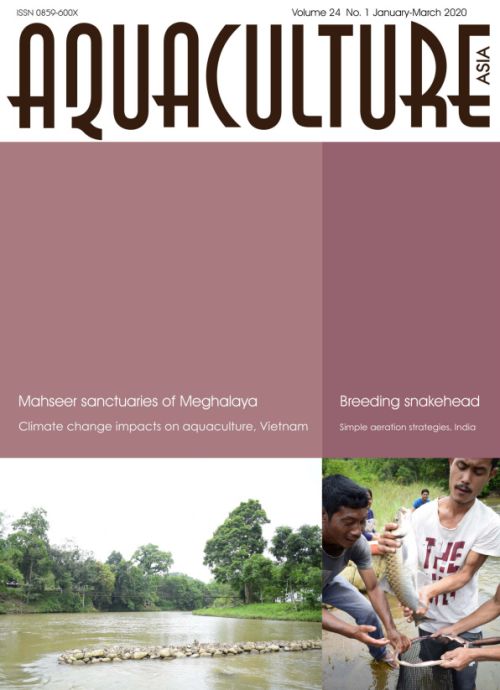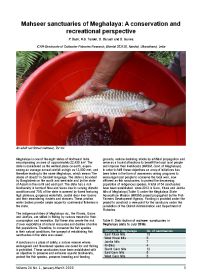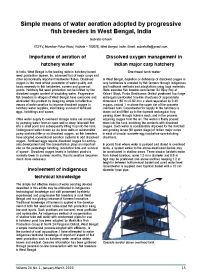Aquaculture Asia Magazine, January-March 2020
19 February 2020 | 14096 views | .pdf | 5.58 MB | Emerging Global Issues, Environment and Sustainability, Freshwater finfish, Genetics and Biodiversity, Hatchery and nursery, India, Indonesia, Inland aquaculture, Shrimp, Vietnam, Water quality

In this issue:
- Mahseer sanctuaries of Meghalaya: A conservation and recreational perspective
P. Dash, R.S. Tandel, D. Baruah and D. Sarma - Impacts of climate change on aquaculture in Vietnam: A review of local knowledge
Alexandra Johnson and Pham Quoc Hung - Simple means of water aeration adopted by progressive fish breeders in West Bengal, India
Subrato Ghosh - Breeding striped snakehead (Channa striata) using the concrete tank method in the Cangkringan Area, Special Region of Yogyakarta
Kurniawan Wahyu Hidayat and Dwi Amelia - NACA Newsletter
Creative Commons Attribution.




